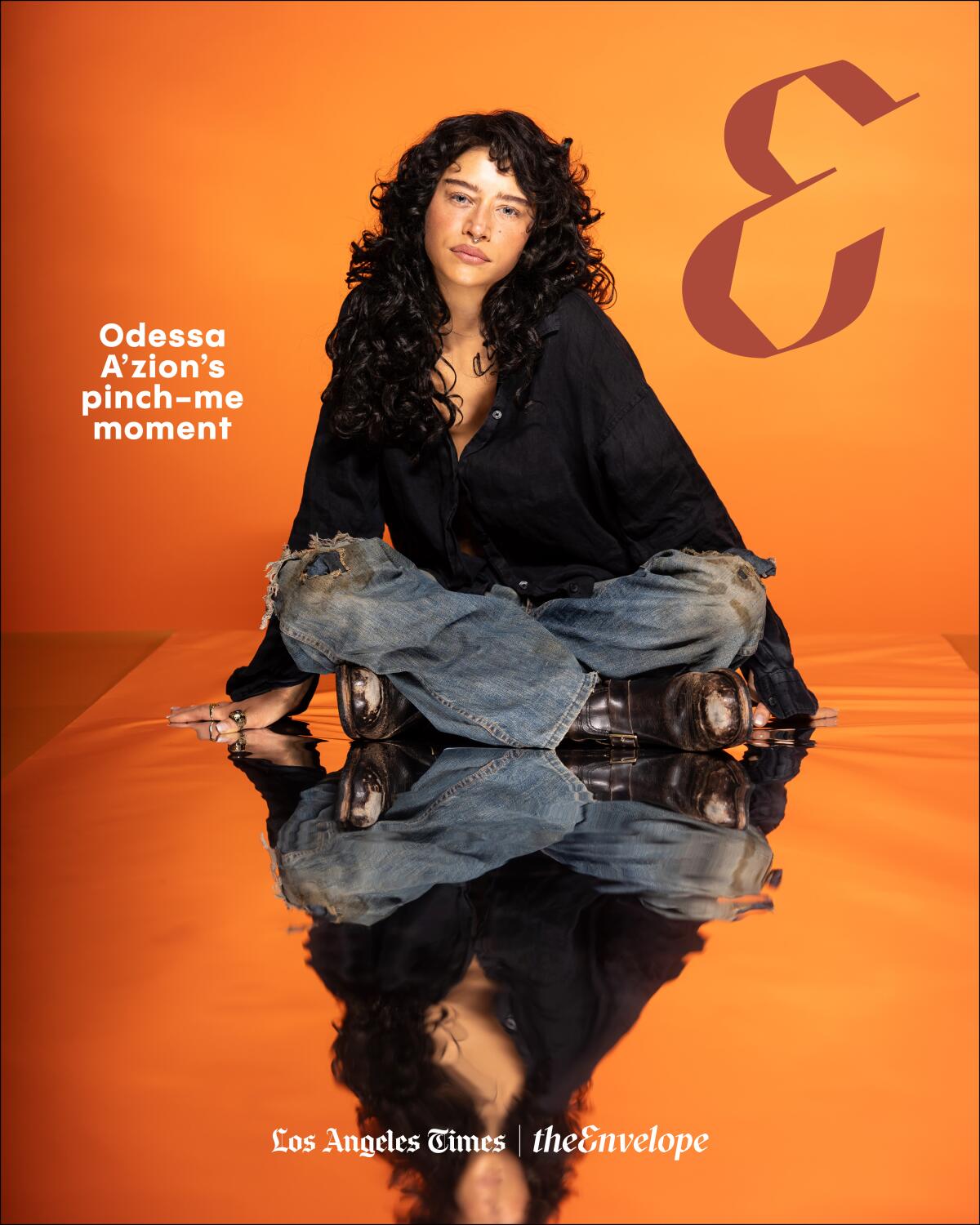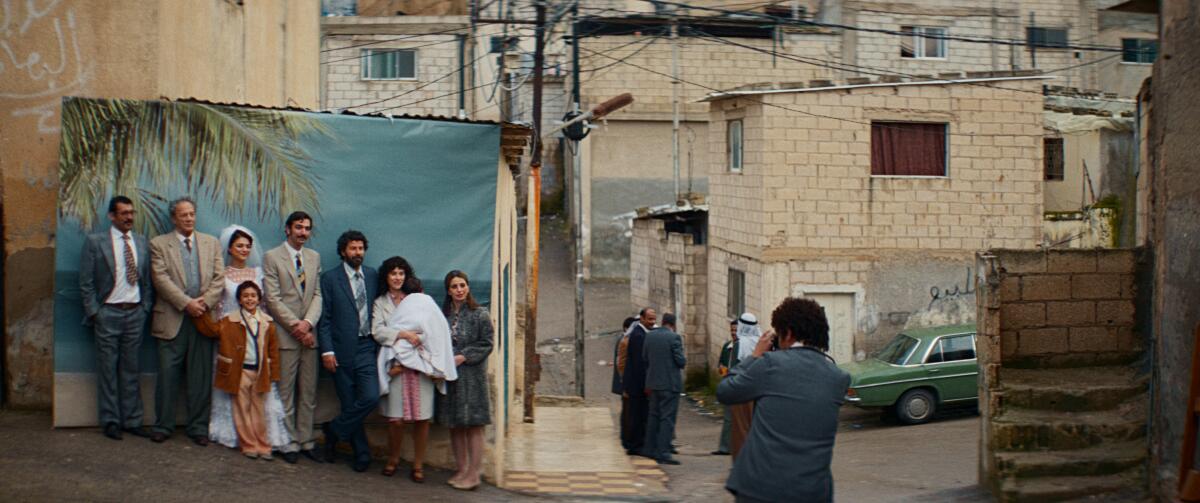Welcome back to another Oscar season!
I’m Matt Brennan, editor in chief of The Envelope, and each Wednesday from now until Jan. 7, I’ll be sending you a (digital) editor’s letter with some highlights from our Phase I issues.
Our first issue of the 2025-2026 campaign features stories on documentaries, films about the Palestinian experience and “Marty Supreme’s” Odessa A’zion.
A Deeper Dive: Documentaries

(Illustration by Daniel Stolle / For The Times)
I won’t pretend to be Nostradamus when it comes to Hollywood’s top awards — my Gold Derby Emmys ballot didn’t even crack the top 1,000 — but most anyone who ran into me at this year’s Sundance Film Festival heard at least one bold prediction that turned out to be correct: 2025 has been a sterling year for documentaries.
With journalists under attack in the U.S., Ukraine, Gaza and beyond, the form’s close connection to reportage has never felt more urgent, at least not to me. In the contraband prison images of “The Alabama Solution,” the body camera footage of “The Perfect Neighbor,” the conflict coverage of “2000 Meters to Andriivka” and “Love + War,” the portraiture of “Cover-Up” and much more besides, the year’s finest documentaries — no, the year’s finest films — manage to unearth new ways of seeing our society’s most pressing issues, often with more precision and subtlety than scripted films much longer (and costlier) in the making.
To that end, this week Steve Dollar asks the filmmakers behind five of the year’s many worthy nonfiction films — “Apocalypse in the Tropics,” “Folktales,” “Predators,” “Seeds” and “The Tale of Silyan” — to share what images became the keystone of their latest projects.
Digital Cover: Odessa A’zion

(Christina House / Los Angeles Times)
I can confirm Tim Grierson’s reporting that Odessa A’zion is a hugger: I received several myself from the “Marty Supreme” and “I Love L.A.” performer when she stopped by The Times newsroom recently for an Envelope digital cover shoot, her own 16mm still camera in hand.
As Grierson notes of the actor, A’zion “doesn’t behave like a rising star” — and she’s not particularly comfortable with the label, either.
“A’zion has heard those predictions before, so she’s wary about being anointed the next big thing,” he writes. “After all, she remembers all the auditions that went nowhere. She remembers being behind on her rent. She remembers almost being evicted. She remembers getting fired from gigs. Simply being cast in a Josh Safdie film doesn’t make those old wounds disappear. ‘To all of a sudden be like, “OK, I’m done [worrying about my career]!” — I don’t see that feeling coming anytime soon.’”
A trio of Palestinian films in the international feature race

A scene from “All That’s Left of You.”
(Watermelon Pictures)
Palestinian stories are no stranger to awards season. But this year, as Gregory Ellwood writes, a trio of films from female directors — each submitted by a different country and each set in a different time period — make for a particularly remarkable confluence.
“In a way, the movie lived what most Palestinians live: war, exile, fleeing,” “All That’s Left of You” filmmaker Cherien Dabis told Ellwood of her film having to shift production after the outbreak of the Israel-Gaza war. “All of the uncertainty, the financial and logistical crisis of it all. I think that what really grounded me during that time was just knowing that the movie was more relevant than ever, and that it had to get done.”
Read more on “All That’s Left of You,” “Palestine 36” and “The Voice of Hind Rajab.”
